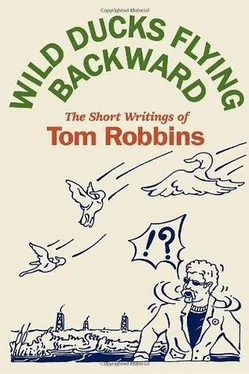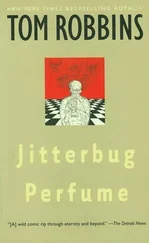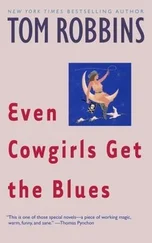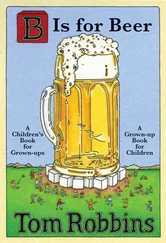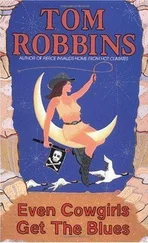Writers on Directors, Watson-Guptill, 1999
Even though as a novelist and as a person I have long since left the period behind me, I remain convinced that the years 1964–72 were spiritually and politically the most momentous our nation has ever known, a time (destined to be endlessly maligned and misunderstood) when actual transcendence was in the air, and the words “land of the free and the home of the brave” began to be taken literally by some Americans, much to the chagrin of others.
Yet, considering all the ferment, foment, experimentation, and illumination that characterized the era, I must say it had some surprising aesthetic deficiencies, particularly in the realm of furnishings and décor.
While the myriad thrift-shop tapestries, Persian carpets, overstuffed sofas, beaded lampshades, peacock feathers, incense burners, macramé wall hangings, paisley cushions, and florid neo-Nouveau poster art provided a soft, tactile, sensually rich environment in which to get congenially, entertainingly, and even enlighteningly stoned, there was something about it — the clutter, the closeness, the inevitable moth-eaten dustiness and fake Orientalism of it — that was as cloying as the parlor of a Victorian vicar.
Whether I inhaled or not, it made me want to cough.
The rooms I chose to inhabit back then are very much like the ones I dwell in now: interiors in which an array of clean, bold, simple, primary colors are set against a background of starkest white. My décor guru has always been Matisse, to whom I’ve instinctively turned in matters of taste, shunning the busy business of Klimt, Beardsley, and Jerry Garcia. Having said that, however, I can think of two material items from the 60’s that ought to be honored: the miniskirt for its glorious debut, the brassiere for the martyrdom it suffered in exile.
The widespread donning of the miniskirt and doffing of the bra symbolized a burbling rebellion against constraint — sexual, societal, political, and religious. Among other things, our culture was being refeminized, and unharnessed women in abbreviated loin-wrappings — looking good, feeling free! — expressed this in a way every bit as direct and immediate as men in frilly collars and waist-length hair. Old boundary lines were blurring like wet mascara, and much of the land was giddy with the hashish of social change. Humans, hopes, hemlines: all were as high as kites.
It wasn’t merely that miniskirts (and their sisters in emancipated style, hot pants) were sexy. Rather, they were sexy in a decidedly playful way, a playfulness which carried over into many other aspects of life.
People were being playful in the face of adversity, violence, and turmoil. That’s the sort of playfulness that can transcend whimsy and frivolity to become a form of wisdom, a means of survival, a kind of grace. Women might protest an unjust war or battle for civil rights, but as evidenced by their attire, they refused to let the issues of the day make victims of them or drag them down into dowdy despair.
Eventually, of course, the pendulum swung. On the one hand, the old Judeo-Christian fear of license precipitated a vicious backlash. On the other, when the mainstream press finally got around to embracing thigh-flash and bra smoke as definitive of and essential to the “with-it” modern woman, the spirit of mischief and revolt was compromised and all the fun expired. The party was over. Brassieres rose from the ashes and resumed their erstwhile duties. It was the miniskirt’s turn to be burned.
Short-short skirts have come back several times since then. But you know I’m right when I say it’s not the same. Indeed, it may no longer be possible to stitch a zeitgeist into a few square inches of cloth.
Ah, but while it lasted, the 60’s miniskirt was a sight to behold. More than a garment, it was a flag without a country, a banner without a slogan, a pennant without a team. Leather or satin, snug or flared, smooth or pleated, sassy or coyly demure, it was the all-embracing banderole that flew from the masthead of a heroic escapade. It was the happy standard of the heart.
The New York Times, 1995
It must be really irritating to have come of age in the 1980’s or 90’s to find your decade — your very own historical moment— persistently overshadowed by The Decade That Will Not Die, the ten years that have stolen the show of the twentieth century and hogged the cultural limelight for as long as you can recall. Not only are the 1960’s a hair (a long hair) in your generational soup, but if you’re a thinking person you’re aware of both the fallacy of decadism and how dangerous and dumb it can be to embalm yourself in the attractive amber of the past.
In most of our lives, for better or for worse, there occurs a period of peak experience, a time when we are at our best, when we meet some challenge, endure some ordeal, receive some special recognition, have some sustained, heretofore unimaginable fun, or just feel consistently happy and free. There’s a tendency then to become psychologically frozen in that glad ice, turning ourselves into living fossils for the remainder of our existence.
For females, the retrograde flypaper is often summer camp or high school. For far too many American males, it has been the armed services; the one time in their lives when, relieved of parents, wives, children, dull routines, and responsibilities, their every need supported, they could enjoy camaraderie, travel, and adventure. An awful lot of America’s leaders never outgrew their wartime exploits, and these old padnags — waving red-white-and-blue cattle prods and farting the low notes of the Star-Spangled Banner — have over and over again insisted on military solutions to economic disputes, a manifestation of arrested development for which the world has paid a hard and ugly price.
Gray-haired flower children, while infinitely more benign, can seem almost equally foolish. Yet it would be a mistake — a smug distortion — to dismiss the 60’s as just an ordinary fucked-up decade with a good press agent. Not only did the 60’s differ from the 50’s, the 80’s, the 90’s, etc., they were in several significant ways superior to them; superior, for example, in the expenditure of both passion and compassion, superior in the number of romantic seekers and idealistic questers (bless them each and every one) searching for something more substantial than material success. From the perspective of the so-called counterculture (for a time, the “counterculture” functioned as the dominant culture), music was less superficial then, authority less respected, violence less tolerated, love less fettered, wealth less worshiped, power less coveted, guilt less shouldered, depression less indulged, and fear less shivered with. In the 60’s, beauty had not yet been voted out of office by the art community, flirting hadn’t been demonized as sexual harassment by the cops of correctness, and tickets to any number of nirvanas could be easily obtained at any number of outlets, ancient or futuristic, although as Hermann Hesse once cautioned us, “the Magic Theater is not for everyone.”
Illumination, like it or not, is an elitist condition. In every era and in almost every area, there have resided tiny minorities of enlightened individuals living their lives just beyond the threshold, having prematurely breached the gateway to what conceivably could be humanity’s next evolutionary phase, a phase whose actualization — if it’s to come at all — is probably still many years down the line. In certain key periods of history, one or another of those elitist minorities has become sufficiently large and resonant to affect the culture as a whole.
Читать дальше
